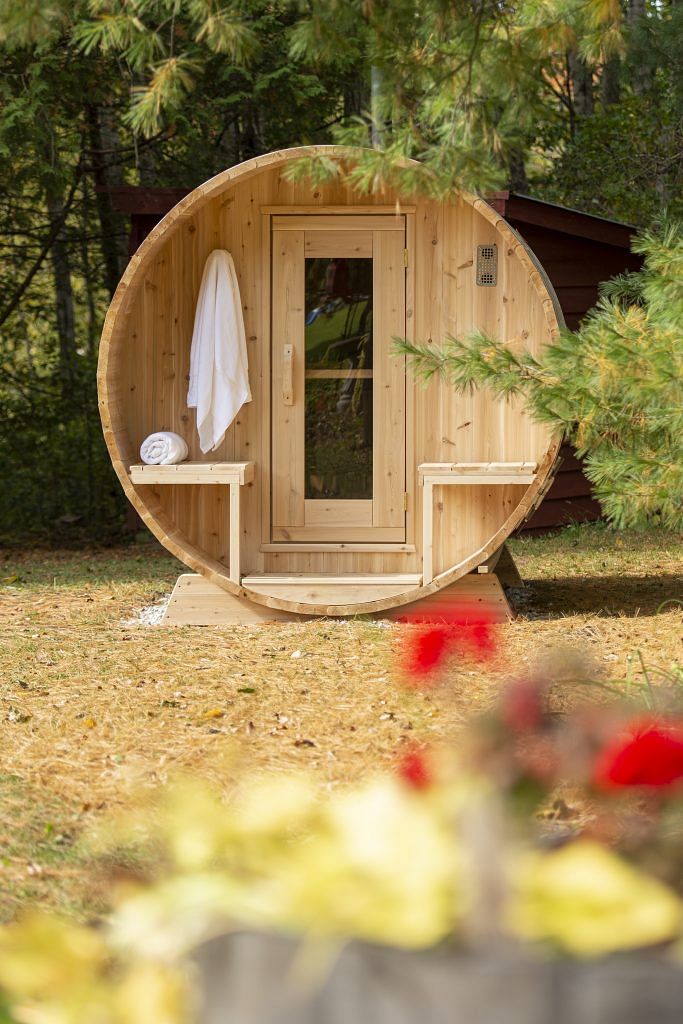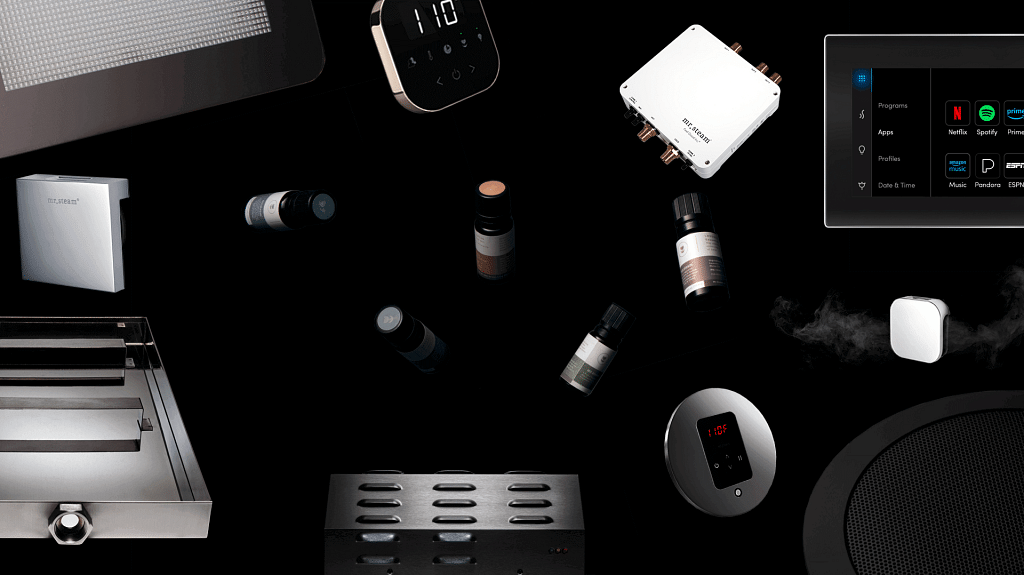Sauna
From Quick Revitalization to Total Detox: How Long Should You Stay in a Sauna?
Sauna use serves as physical relaxation and psychological therapy all in one. In fact, Finland’s growing sauna culture has made it the happiest country in the world! Spa treatment is great for those looking to gain individual clarity as well as people who want to relax with friends or a partner.
But how long should you stay in a sauna?
Here, we’re going to answer this question and give you some tips for using your personal sauna safely. Read on to learn how much time you should ideally invest in at-home spa treatment.
How Long Should You Stay in a Sauna?
In general terms, you can sit in a sauna safely for 15-20 consecutive minutes. While saunas are an amazing place to relax and unwind, overdoing it can make your body become dehydrated.
Some people can only stay in for 10 minutes while others can safely get away with a full half hour. Everyone’s body is different and you need to listen to yours.
If you start to feel dizzy or lightheaded, that’s a sign that you should step out of the sauna. If you feel nauseous, get out ASAP. Then drink about 2-4 glasses of cool water to get yourself hydrated again.
How Often Should You Use the Sauna?
Generally, you should limit yourself to enjoying your at-home sauna to three or four weekly sessions. This is especially true of infrared saunas that use electromagnetic radiation to heat up your sauna without using extreme heat.
Consider using your sauna on a regular schedule. This will ensure that you get all of its benefits without risking your health. However, you also can use it socially by inviting people over periodically and enjoying the heat together.
Just use discretion and ensure that you don’t use it so often that you dehydrate your body.
Sauna Timeframes for Beginners
If you’re new to the world of saunas, you don’t want to overdo it on your first entry. Like enjoying spicy food or flying comfortably at high altitudes, basking in sauna heat happily requires you to build up a tolerance.
You’ll want to start with five-minute sauna sessions until your body acclimates to that. This will take a week or two, and you can slowly work your way up to 20 minutes in these short intervals.
This ensures that you can use your sauna safely, comfortably, and enjoyably in the long term.
Using Saunas in Shorter Intervals
While 15-20 minutes lets you get all the best effects of a sauna, it doesn’t always need to be consecutive. If you want to hang out for a long period but are struggling to contend with the heat, you can heat yourself up for 8-10 minutes. Then exit the sauna, cool down for five minutes, drink a glass of water, and go back in for another 8-10 minutes.
This can help you build your tolerance when you’re just beginning to use one. It also may be more comfortable even for seasoned sauna users. Listen to your body’s needs and accommodate them.
To Heat or Not to Heat: When Is the Best Time to Use a Sauna?
No matter how long you plan to use your personal sauna for, you need to do so at the right time.
The average person’s skin temperature reaches over 100º F within just a few minutes of entering their personal sauna. Their heart rate goes up by 30% or more and essentially doubles the amount of blood the heart pumps each minute. Because of these extreme short-term physical changes, you need to know when not to use a sauna safely.
Enter a sauna when you’re well-hydrated. Try drinking more water throughout the day if you plan to rest and unwind in your home sauna later.
Eating can also help you feel better while in the sauna. A higher heart rate can boost some people’s metabolism and make them hungry. Being well-fed reduces the chances of heat exhaustion and fainting.
Do not use a sauna after drinking alcohol and medications that might make it harder for you to sweat. Alcohol dehydrates you and certain medications impact the way your body processes temperature.
If you have naturally high blood pressure, you should talk with a medical professional before sauna use. The same applies to those with heart disease. You don’t want to overwork your cardiovascular system.
Saunas Use and Workouts
Lots of people use their home sauna as part of their workout routine. When done correctly, this is a great way to make the most out of your exercise regimen 3-4 times weekly.
If you like to indulge in a pre-workout spa treatment, sit in the sauna for between five and ten minutes. This will heat your core temperature to the appropriate point that you can more efficiently stretch out. You may be less likely to contend with pulled muscles and eventual sprains.
Some people prefer to save their sauna time for after a workout. This is also okay, but you need to shower between exercising and sitting in the spa.
Wait 10 minutes after your shower to get into the sauna. Don’t stay there for longer than 20 minutes. Be especially vigilant about this timeframe post-workout so you don’t become dehydrated after exercise.
How Different Sauna Types Impact Spa Timeframes
Generally speaking, the type of sauna you use will not alter how long you should sit in it.
However, those who use them do get different benefits from each other, so people using them will have different goals and needs. Timeframes may therefore vary a bit from sauna to sauna.
Traditional Dry Wood Saunas
Those in traditional wood saunas or barrel saunas sit in a room heated with hot rocks and steam. The air is dry and the wood traps heat to create a hot space. These saunas boost circulation, reduce inflammation, relieve muscle pain, and make it easy to relax.
If you’re using a wooden sauna, you may want to sit inside for about 20 minutes to make the most of your session. The dry air means that you won’t sweat as much as you would in a steam sauna.
Steam Saunas
Many people can stay in steam saunas for 20 minutes, but it isn’t always the best idea. This is because heat is created by hot steam. Humidity helps to open up airways and pores while improving skin hydration.
However, since steam saunas cause a lot of sweat and make you lose fluids quickly, you should often limit sessions to 10-15 minutes. Once you get out, quickly rehydrate by drinking cool water at even intervals. Don’t go so fast that you become sick, but drink 3-4 cups steadily.
Infrared Saunas
Infrared saunas use infrared heaters to specifically warm your body. The air around you won’t be warmed. This means that you’ll get the benefits of a deeper, more penetrating heat.
In addition to being good for circulation and lowering your stress levels, it serves as a detox for your body. Your immune system improves!
While you should never exceed 3-4 infrared sauna sessions weekly, you may be able to stay inside one a little longer. A 30-minute session may not be out of the question once you build up a heat tolerance.
Spa Treatment Length and Benefits
Using your sauna for the appropriate length of time means reaping all of the best benefits of using one. In addition to stress reduction and lower anxiety levels, studies show that appropriate sauna use can boost your sleep.
Additionally, using a sauna regularly reduces the symptoms of depression. Studies suggest that symptoms may go down by a whopping 50% and the benefits of a single spa session can continue for six weeks.
Saunas also increase brain-derived neurotrophic factor (BDNF) proteins in the brain. These proteins protect and repair existing brain cells as well as promote the growth of new ones. This lowers your risk of mental illnesses developing in the future while also improving your mood in the present.
Pain Relief
Beta endorphins are compounds in your body that serve as pain relief.
Your brain naturally produces them during times of stress and pain. However, it also makes them when you exert your body. Exercise releases beta endorphins, and the physically stimulating nature of sauna use also causes their release.
This means that sitting in a sauna can reduce your pain levels. If you suffer from chronic pain, you can enhance your daily life with regular sauna use. A 2010 study on people with fibromyalgia showed that six months of sauna use decreased their pain levels by 28% to 66%.
No matter what the source of your pain is, saunas can release the compounds to help soothe it.
Enjoy Your Home Sauna the Right Way
So, how long should you stay in a sauna to get the most benefits?
The general answer is 15-20 minutes, but it ultimately depends on your body’s needs and your personal preferences. Now that you have an in-depth answer to this question, it’s time to begin relaxing with a home sauna. Our experts are committed to offering easy-to-install saunas for at-home use.
You can choose from a wide range of sauna shapes, sizes, and types. Contact Norse Steam to learn more about boosting your R&R routine.










